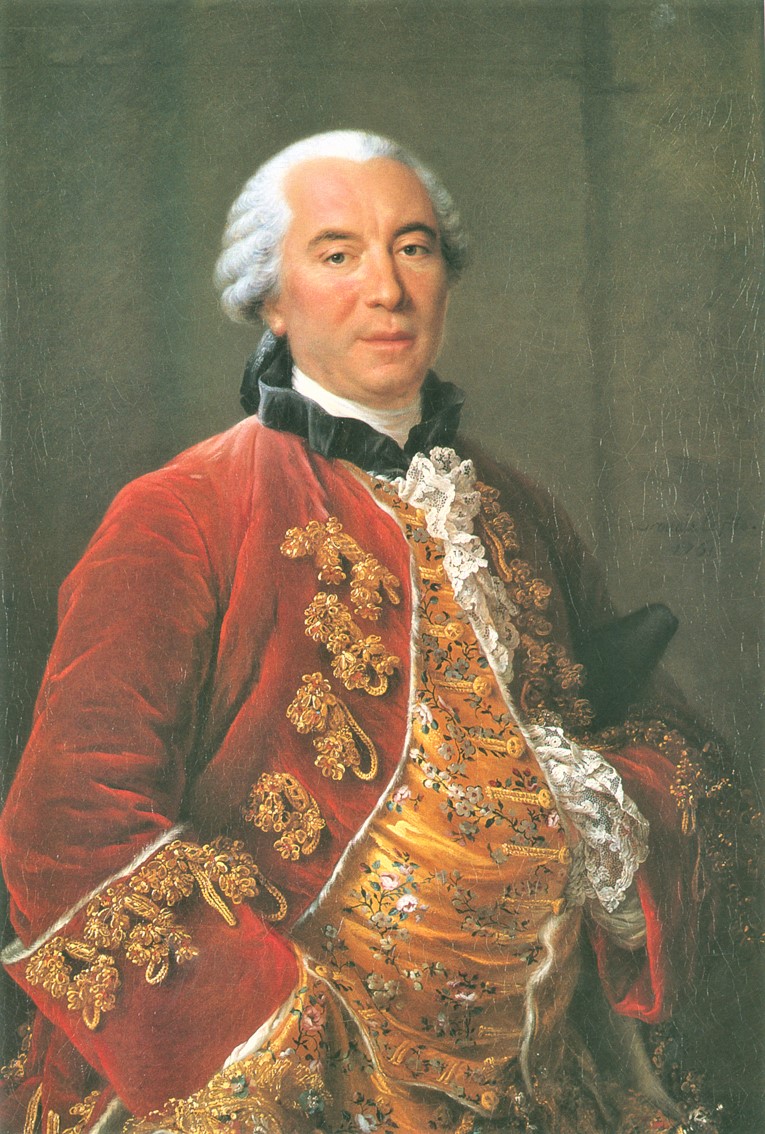What is deep time? Author Noah Heringman (Prof of English at the Univ. of Missouri) describes it in setting out the main argument of his book: “the history of deep time before modern geology and its radiometric dates depends on qualitative measures in literary form.” He reserves the use of the term “in the strictest sense for geological discussion.”
A key figure in this ‘literary’ heritage is the Comte de Buffon (1707–1788; pictured here). Heringman is careful to note that the phrase “dark abyss of time” is sometimes misattributed to Buffon. But he does not make it easy for the reader here, when he states that “Rossi and Laurent Olivier” are scholars who have made this error. Rossi was mentioned only once earlier in the book (37 pages prior). Indeed, the book is quite selective in its entries. Fuchsel (pg 19), Rouelle (pg 21) and Guettard (pg 103), among others, are all lacking an entry in both the Index and the Bibliography. Since the author’s arguments are ‘deep’ (pun intended), these issues do not serve to advance understanding.
Getting back to Buffon, he wrote a philosophical history of nature, which spanned an incredible 36 volumes! The volume of particular interest here is vol. 25, Epochs of Nature. To put it in context, Epochs was written “while Capt. Cook’s second voyage was still underway.” Heringman writes that “the transition between geology and prehistory is one of Buffon’s key contributions to the history of deep time.” His discussion intertwines with the work of Johann Forster and his son Georg. “Their narratives deserve a special place in the history of both geological and anthropological time because they document the original proximity of these two seemingly discontinuous scales of time.” One thing Buffon did that the Forsters did not was to “attach hard dates to events preceding the written record, events categorically excluded from the natural history of man.” Buffon also wrote about “gigantic animals” in the distant past, which Forster dismisses as a fairy tale. Welcome to the dinosaurs!
Needless to say, Buffon caused an uproar. “Widespread criticism of Buffon’s speculations aligns neatly with the Enlightenment division between empiricism and theory. Buffon’s literary style in a major locus of these criticisms.” Here we see the thrust of Heringman’s project, relating the scientific writings about deep time with literary expectations. Despite Buffon’s vivid style, which was regarded by many as novelistic, Heringman concludes that the 1778 book Epochs “should count as the ‘first Earth history,’ in the sense of a geochronology employing some of the units and criteria still in use today.”
The author puts all this in context at the end of chapter 3, showing that the ancient Greeks 2,200 years earlier were far ahead of the scholars of the 18th century. “Herodotus readily arrived at the figure of tens of thousands of years that Buffon struggled so hard to justify and that his contemporaries decried as romance.” In this specific case, Herodotus realized it took tens of thousands of years for the Nile to have deposited enough sediment to create the Delta.
Heringman has a fascinating discussion on The Ballad of Early Man. Several scholars in the 18th century turned to ballads in an effort to recover the very oldest times. The English antiquary Joseph Ritson “fiercely rebutted arguments for the medieval origins of English ballads. William Blake was also a ‘ballad skeptic.’
“Although Ritson turns to the larger category of song and Blake turns to epic in his quest to produce “poems of the highest antiquity,” their inherit their commitment to verse as a medium for preliterate human antiquity derived from ballad collectors.”
Ritson created a deeper past for the origins of song than of ballads; like Herder, Charles Darwin also regarded “song as one of the most ancient and permanent natural-cultural faculties of the species.” This deep past concept “depends more explicity on comparisons between ancient people and modern ‘savages,’ a methodological foundation he shares with Johann Herder, the German inventor of the term ‘folk song.’” Herder wrote a massive book in the late 18th century, Ideas for the Philosophy of the History of Mankind; a new English-language edition of his book was just recently published, and will soon be reviewed here in SunNewsAustin.com
“Folklore comes into play in the Ideas as a site of contact between geology and prehistory.” Heringman informs us that “As a historian of humankind seeking a foundation in natural history, Herder freely acknowledges his debt to Buffon, though he is also critical.” One can see the interrelationships between Herder, Buffon, Ritson, Darwin and the others. One chapter builds on another to erect an impressive edifice of the “vocabulary of deep time” that takes us to our era. “Stephen Jay Gould and John McPhee, who popularized the term deep time in the 1980s, consider human history chiefly as a foil to set off the magnitude of geological time.”
When one now thinks of deep time, Darwin naturally comes to mind, and the rightness of this is confirmed by Heringman. “Deep time could not have solidified as a concept without the developments to which Darwin, John Lubbock, and their contemporaries were responding. In grappling with the evidence that human antiquity must be calculated on the same time scale as geological time, they resisted many of its implications.” When reading this title, keep the concept of time scales in mind, as it will unlock much understanding of what Heringman is exploring in this important and engagingly well-written book.
Deep Time: A Literary History is by Princeton University Press. It lists for $120 (Hardcover) or $35 (softcover).
Image: Comte de Buffon. In the public domain; in the collection of the Musee Buffon, Montbard.
